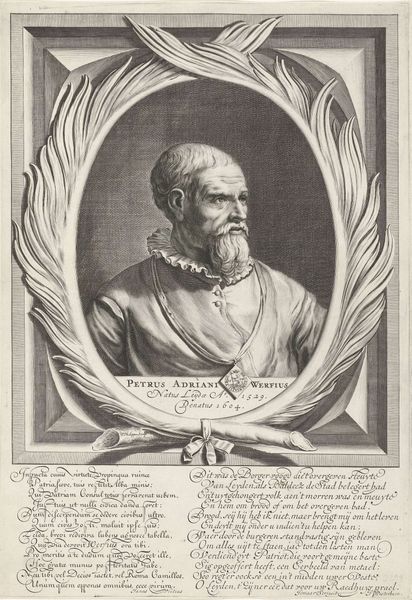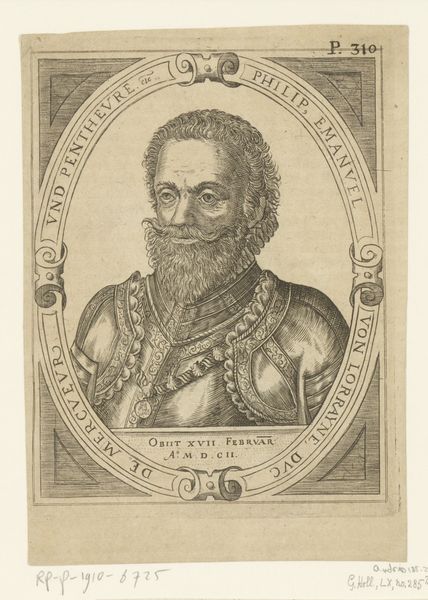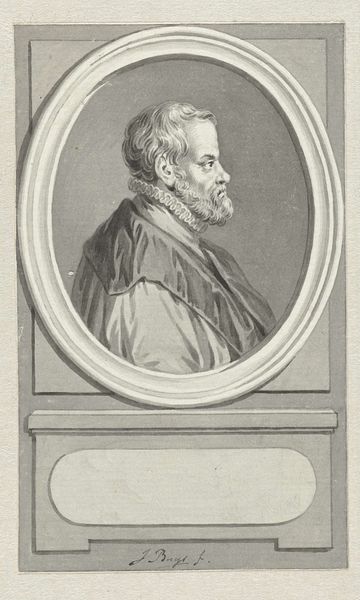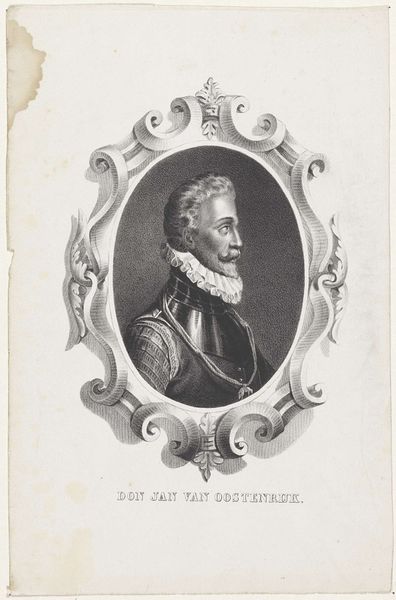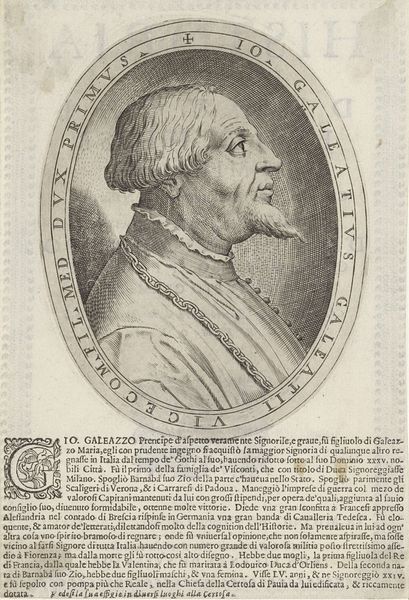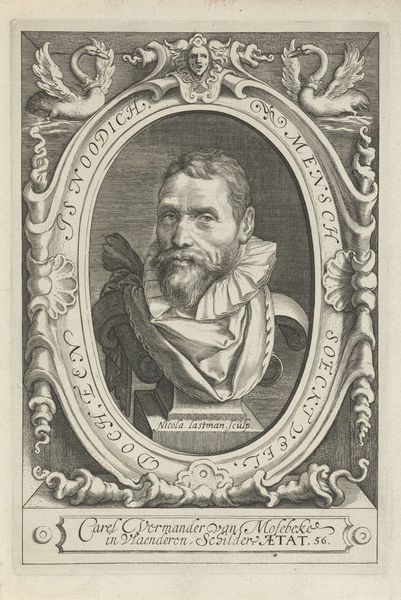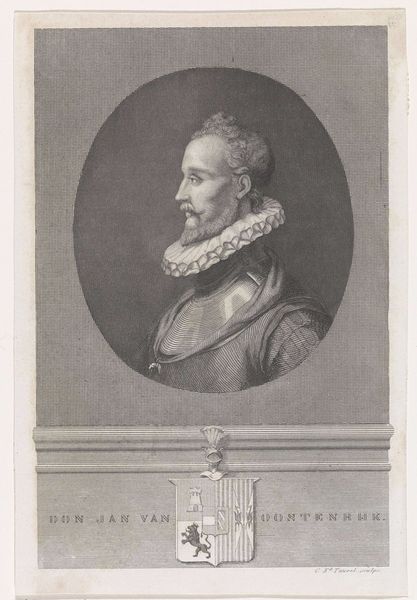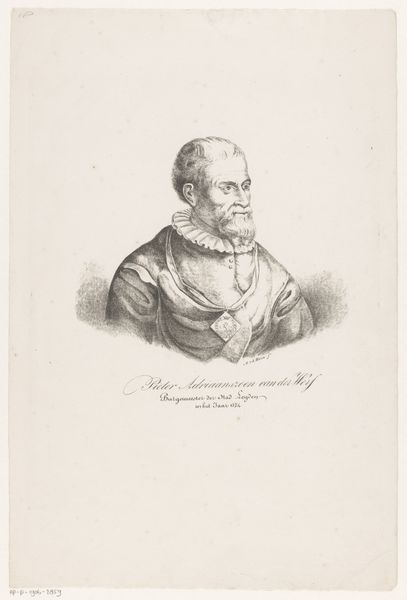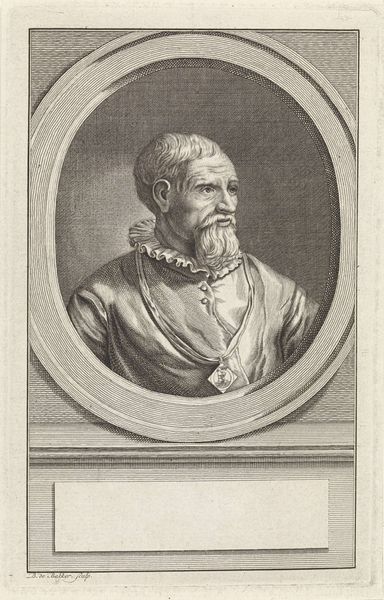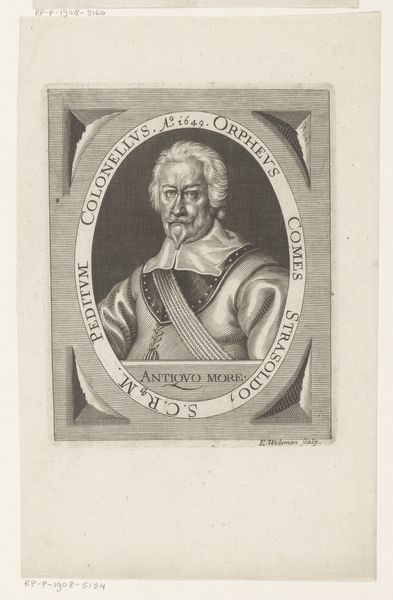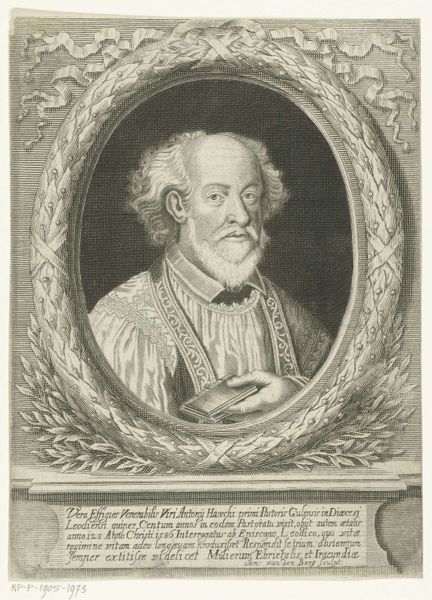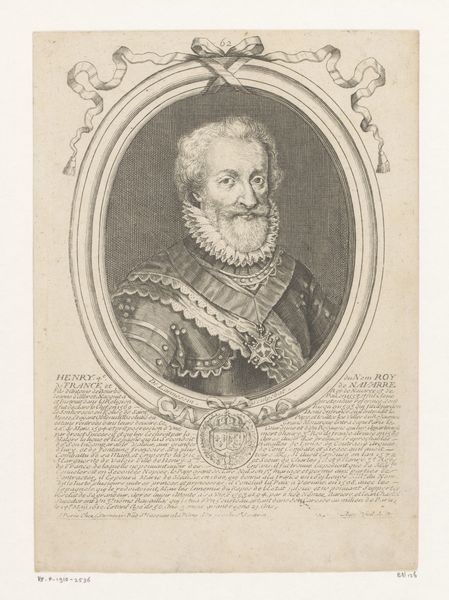
Dimensions: height 180 mm, width 120 mm
Copyright: Rijks Museum: Open Domain
Curator: Here we have "Portret van Pieter Adriaansz. van der Werf," an engraving by Jacob Houbraken, dating back to 1774. It's a remarkable piece in the Rijksmuseum's collection. Editor: My first thought? "Steady." This fellow just looks…anchored. There's a stillness in the portrait; very composed and considered. Even though it’s monochrome. It sort of leaps from the yellowing paper! Curator: The "yellowing background," as you call it, is probably just the natural aging of the print, though the quality of the line engraving remains incredibly crisp. Houbraken was a master of capturing likenesses, commissioned by elites as a marker of their social position and legacy. Editor: Legacy, sure. But also… mortality. I mean, look at his eyes, you get the sense he’s staring down something, maybe even just time itself. It’s so precise! Look at the ruff and details of his cloak! And the slightly weary eyes. But all controlled with the oval frame… Curator: Indeed, it places him within a tradition of Baroque portraiture. He’s dressed in simple dark garments but adorned with symbols of civic duty and privilege; look at that medallion around his neck, its intricacies replicated by fine incisions. Note, too, the plaque detailing his position within Leiden's city government during the 16th century! The function of the portrait itself reinforces an established order and public identity. Editor: Mmm. I get that, that authority. I was looking, actually, at the tension between his solidity, his three-dimensionality—a weight to him even here in line engraving— and the fact he’s also a pattern. An artwork within a geometric shape. Curator: A tension very much deliberately framed. These engravings, designed for wider distribution, allowed the sitter's image to circulate far beyond his physical presence, creating almost a…spectral extension of his power. The aim to control even interpretation, placing his significance firmly in the historical record. Editor: A spectral extension...I love that. Now, looking again, the image itself appears very clean! Jacob has had something to say but he is choosing his words cautiously…The crosshatching is minimal for dramatic light. It must be a true likeness with very little stylizing! Curator: I concur. It does highlight an important intersection of art, history and power: it represents someone who clearly had quite some civic power and status, in the history of Leiden! Editor: Agreed. This man remains. A portrait of a soul preserved carefully on ageing paper and beyond!
Comments
No comments
Be the first to comment and join the conversation on the ultimate creative platform.
